There is some conjecture about the first European birth on Australian soil, but William Nash seems to be the prime candidate. His father, also William, was a Marine Private and his mother was Maria Haynes, who came as his common-law wife (they were not married until later). There are biographical entries on both parents in The Founders of Australia: A Biographical Dictionary of the First Fleet, by Mollie Gillen, published in 1989 (pp. 261-262). The book also lists those who were born on the voyage. William Nash was baptised on 25 May 1788 (his actual birth date is not known), and died on 19 June 1789. A search of the NSW Registry of Births, Deaths and Marriages Historical Indexes will show that the Birth Registry number is "1A/1788", which indicates that his is the first entry in the register for 1788 (although not necessarily proving that his was the first birth). Digitised copies of his baptismal and death register entries can be purchased from the Registry. Governor Phillip's reports are published in The Historical Records of Australia Series 1 Volume 1, but there is no mention of the first birth in the colony; on 12 February 1790 he simply states the number of births (59) and deaths (72) that had occurred to date. Unless further records are discovered, we will probably now never know definitely who was the "first born", but William Nash is the most likely. (web-editor Cedric Williams: this would make William my grandfather's grandmother's brother or my great great great uncle, wouldn't it?
| John was married to Sarah Nash, daughter of William Nash and Maria Haynes, in 1814 at St John's Church of England, Parramatta, NSW, Australia. |
 ..http://www.geocities.com/mepnab2/np/n.html?20075#will
*http://members.optusnet.com.au/~aashmore/ Nash Family History
I came across an article by Carol Baxter, a distant cousin, written in 2000 but still on the internet under "Whatever happened to Maria".
"Maria was only 16 0r 17 years of age..." Right on, Carol, but our gr gr grandfather was already bedding her without the benefit of marriage.
In fact, he was not breaking any law that I know because the age of consent was only twelve at the time and was not changed until 1885, when it was first fourteen and then sixteen.
Governor Phillip in his journals deplores the young whores some only eleven or twelve who proliferated in the settlement catering to convicts and marines. The use of the "Female Factory" as a brothel is well documented.
There is much documentation of the sexual and "romantic" activities going on betweeen convict women and crew members and marines on board. They mingled and slept together freely. Authorities did not give a damn.
You have not explained the marriage documents she had in her possessions when she "married" William Nash. I am refering to your own book "Nash, First Fleeters and Founding Families."
I don't know whether Maria was really married to Luke Haynes (Hines) or not and neither do you.
You quote your esteemed membership in genealogical associations and your various publications, but that does not give you license to proffer your opinions as fact without any proof.
You castigate other historians and writers in their opinions, but you show naivite concerning the human relationships of those turbulent times.
Apparantly you would like Maria to have been a chaste young girl, because she was our great great great grandmother, but in all likelihood she was just one of the hundreds of young girls around Portsmouth harbour giving favours to crew members and marines for a consideration.
I don't know that was so, but you don't know it was not so.
There was no work to be had except as a servant and Maria may have preferred romance to drudging for one guinea a year and always saying "Yes, ma'am, right away ma'am!"
What we do know is she was about fifteen and hanging around the docks without parental supervision.
She may have married Luke Haynes and William Nash may have won her in a card game or might have fought for her, as my own father fought for my seventeen- year- old mother, knocking Wattie Webb down on Sutherland railway station in 1931.
Times have changed but passions have not.
The authorities in that era were concerned in keeping the peace and getting the riff-raff out of England to Sydney Cove, as a bulwark to French expansion, and a convenient solution to the too frequent hangings for petty crimes.
That is not to say they were "riff-raff" On the contrary I believe the convicts and marines were as decent as they could be under an oppressive social system, where only the rich or gentry were considered of worth.
Next follows part of the article by Carol. ****************************************************************8
..............The conclusion that Maria was the estranged wife of Luke Haynes is just as curious. Both Carter and the researchers who originally proposed this idea clearly ignored the fact that Maria was only 16 or 17 years of age when the Fleet sailed, a very young age for supposedly having had multiple serious relationships. They also failed to ask themselves why they thought that the authorities would have approved the passage of one marine's "de facto" wife when she was already married to another marine who was travelling with the Fleet. The evidence of William Nash's own court case in 1803, which is well known to all Nash researchers, shows that the authorities considered wives a "possession" of their husbands. Clearly they would not have allowed one man's possession to travel with another man, both because of the attitude to women at that time and, most significantly, because the potential for conflict during a very long and treacherous sea voyage would have been too great. In this case the ramifications would have been even more serious as it supposedly involved the brutal Luke Haynes.......
..
..http://www.geocities.com/mepnab2/np/n.html?20075#will
*http://members.optusnet.com.au/~aashmore/ Nash Family History
I came across an article by Carol Baxter, a distant cousin, written in 2000 but still on the internet under "Whatever happened to Maria".
"Maria was only 16 0r 17 years of age..." Right on, Carol, but our gr gr grandfather was already bedding her without the benefit of marriage.
In fact, he was not breaking any law that I know because the age of consent was only twelve at the time and was not changed until 1885, when it was first fourteen and then sixteen.
Governor Phillip in his journals deplores the young whores some only eleven or twelve who proliferated in the settlement catering to convicts and marines. The use of the "Female Factory" as a brothel is well documented.
There is much documentation of the sexual and "romantic" activities going on betweeen convict women and crew members and marines on board. They mingled and slept together freely. Authorities did not give a damn.
You have not explained the marriage documents she had in her possessions when she "married" William Nash. I am refering to your own book "Nash, First Fleeters and Founding Families."
I don't know whether Maria was really married to Luke Haynes (Hines) or not and neither do you.
You quote your esteemed membership in genealogical associations and your various publications, but that does not give you license to proffer your opinions as fact without any proof.
You castigate other historians and writers in their opinions, but you show naivite concerning the human relationships of those turbulent times.
Apparantly you would like Maria to have been a chaste young girl, because she was our great great great grandmother, but in all likelihood she was just one of the hundreds of young girls around Portsmouth harbour giving favours to crew members and marines for a consideration.
I don't know that was so, but you don't know it was not so.
There was no work to be had except as a servant and Maria may have preferred romance to drudging for one guinea a year and always saying "Yes, ma'am, right away ma'am!"
What we do know is she was about fifteen and hanging around the docks without parental supervision.
She may have married Luke Haynes and William Nash may have won her in a card game or might have fought for her, as my own father fought for my seventeen- year- old mother, knocking Wattie Webb down on Sutherland railway station in 1931.
Times have changed but passions have not.
The authorities in that era were concerned in keeping the peace and getting the riff-raff out of England to Sydney Cove, as a bulwark to French expansion, and a convenient solution to the too frequent hangings for petty crimes.
That is not to say they were "riff-raff" On the contrary I believe the convicts and marines were as decent as they could be under an oppressive social system, where only the rich or gentry were considered of worth.
Next follows part of the article by Carol. ****************************************************************8
..............The conclusion that Maria was the estranged wife of Luke Haynes is just as curious. Both Carter and the researchers who originally proposed this idea clearly ignored the fact that Maria was only 16 or 17 years of age when the Fleet sailed, a very young age for supposedly having had multiple serious relationships. They also failed to ask themselves why they thought that the authorities would have approved the passage of one marine's "de facto" wife when she was already married to another marine who was travelling with the Fleet. The evidence of William Nash's own court case in 1803, which is well known to all Nash researchers, shows that the authorities considered wives a "possession" of their husbands. Clearly they would not have allowed one man's possession to travel with another man, both because of the attitude to women at that time and, most significantly, because the potential for conflict during a very long and treacherous sea voyage would have been too great. In this case the ramifications would have been even more serious as it supposedly involved the brutal Luke Haynes.......
..
Maria Haynes (I15123)
  | ||||||
| | ||||||
William Nash (I15122)
  | ||||||
| | ||||||
| Birth | England |
| Marriage | 13 February 1789 Maria Haynes - [View Family (F3868)] St Phillip's Church, Sydney, NSW, -Australia |
| Occupation | a marine soldier |
| Emigration | 1804 Australia |
| Last Change | 15 October 1999 |
Hawkesbury on the NET - Hawkesbury
Family History Group Newsletter
Bass and Flinders visited Broken Bay in the 1790s and recruited Bungary
from the indigenous population. Bungary accompanied them on a number of journeys,
including the circumnavigation of Australia.
The first land grant on the Central Coast was made to ex-marine of the First Fleet,
William Nash, in 1811 but he did not settle there. The proximity of a penal colony
at Newcastle discouraged settlement and the rugged terrain made the area a haven
for smugglers, moonshiners, escapee convicts and ticket-of-leave men.
The first white settlers were drawn by the possibilities of exploiting the local
supplies of cedar, forest oak, blue gum and other hardwoods. Boat building
also began at this time and continued until World War I.
Small settlers took up land on the ocean shores, growing small plots of maize , onions, potatoes and hay. Others began dairying or gathered cockle shells which were loaded on to ketches and sent off for lime-burning. The gentry purchased the timbered areas along Erina and Narara Creeks.| Community service in the Hawkesbury Region, Australia. ...
generations of the family of Marine Private William Nash & his wife
Maria Haynes through detailed ...
www.hawkesbury.net.au/community/hfhg/November2003.html - 29k - |
History of Australia - William Nash
| This history of Australia tells the story of William Nash. ...
William was married to Maria Haynes, who had accompanied
him to NSW on the First Fleet, ...
eurekacouncil.com.au/Australian-
History-Heritage/ |
Australian Colonists Series Volume 1 - Alexander - 1788
| 1360 - Haynes, Maria - Convict 579 - Heading, James - Convict 580 -
Headington, Thomas - Convict ... 1194 - Nash, William - Private - Royal Marines ...
historyaustralia.org.au/ozgenie/alexander.htm - 35k - |
A Guringai Family’s Story: guest entry
by Warren Whitfield « Lines ...
| One of the fathers to Charlotte’s children, William Smith, who had an on and off ...
Nash, a marine in the First Fleet to Australia, 1788, and Maria Haynes, ...
ninglun.wordpress.com/2006/11/22/ |
William Nash
William Nash
| Father | William Nash |
| Mother | Maria Haynes b. 1770, d. 13 November 1844 |
| William Nash|b. 25 May 1789\nd. 19 Jun 1889|p7954.htm|William Nash||p7952.htm|Maria Haynes|b. 1770\nd. 13 Nov 1844|p7953.htm||||||||||||| |
| Birth | William Nash was born in 1788 at Sydney, NSW, Australia.1 |
| Baptism* | He was baptized on Monday, 25 May 1789 at St Phillip's Church, Sydney, NSW, Australia. |
| He was the son of William Nash and Maria Haynes. | |
| Death* | William Nash died on Wednesday, 19 June 1889 a t Windsor, NSW, Australia, at age 100. (?) |
Citations:
- [S2] Index of BDM records, NSW BDM, Denomination: Church of England Parish: Sydney, St Phillip's Volume Reference: V178823 1A Registration Year: 1788. (Can this be true? Did not William disappear from the Colony
- with his father the first William Nash? Ric)
Convict women in Port Jackson
CULTURE.GOV.AU (check out details) The underlined sources in the following script will not take you there. You have to first press CULTURE.GOV.AU
In 1788 the First Fleet landed at Camp Cove in Port Jackson with the 'cargo' of convicts which helped establish the penal colony of New South Wales. One in five of the convicts to arrive in the penal colony (1788-1823) was female and they made up the largest group of female colonists in Port Jackson.
The typical convict woman was in her twenties. She was from England or Ireland and had been convicted of robbery - sentenced for seven years as punishment for her crime. She was single and could read but not write. Many convict women were first offenders and given sentences of transportation for crimes that were quite minor, such as pick pocketing, shoplifting or prostitution.
Stories of three very different convict women who lived in colonial Sydney or Port Jackson between 1788 and 1850 follow: Mary Bryant, Mary Reibey and Esther Abrahams.
First Fleet convicts
The conditions that emigrant women suffered on the ships were woeful. The experience of the one hundred female convicts aboard the Lady Penrhyn of the First Fleet highlights the terrible conditions.
They arrived on board after years of imprisonment at Newgate Prison in London, or county prisons. Many of the women were ill with disease and half-naked - their clothes worn out or rotted away - and they had not been allowed to bathe for months. Five women died before they even left England and many others died on the journey or soon after arrival.
A daring escape - Mary Bryant
Among the arrivals with the First Fleet was Mary Bryant (also known as Mary Broad).
*http://members.pcug.org.au/~pdownes/
* First Fleet Home Page.
In 1786 at age 21, Mary was found guilty of stealing a cloak and was sentenced to death. Luckily for Mary, her sentence was later changed to seven years transportation. On the way to Australia, she became pregnant and gave birth to a daughter whom she named Charlotte, after the ship they sailed on. On board was another convict named William Bryant. Mary and William were married on 10 February 1788, just after arrival in the colony. They later had a son together, Emmanuel.
In just a few months, the food the First Fleet had brought with it had run out or was rotten. The convicts were almost starving and many people died. Desperate and hungry, Mary, William and several other men decided that they would try to escape from the settlement of Port Jackson.
They left at night on 28 March 1791, stealing the Governor's tiny boat for their use. They headed for Timor, north of Australia, where many Dutch colonial settlements were.
Amazingly, all of the escapees (including Mary's two small children) survived the long journey to Coupang on Timor Island, arriving there on June 5. Their journey was over 5000 kilometres and would have been incredibly difficult and dangerous.
Upon arrival in Coupang, the escapees told the Dutch Governor they were survivors from a shipwreck. At first their story was believed but soon the Dutch authorities learned who they really were. All were locked up and sent to Batavia (current day Jakarta), where Emmanuel and William died after contracting a disease. Three others who had made the long journey also died. Mary and her daughter Charlotte were sent back to England, but Charlotte died on the long voyage.
After arriving back in England in June 1792, Mary was sent to Newgate Prison to await trial for her crimes. Mary's story became well known and was covered in the press. She became a celebrity and was officially pardoned and discharged in May 1793. She then returned to her family in Cornwall.
Female factories and assigned labour http://shhs.1earth.net/kla/compstud/Assig/FirstFleetData.html
Many visitors came to the Cascades Female Factory site in Hobart in 2004 to remember the convicts who were imprisoned there. Image courtesy of Female Factory Research Group
Prior to 1804, all convict women lived as male convicts did (but in separate barracks or tents) and were assigned to military or free families. They did physically hard work either as servants doing farming, cleaning and washing, or in groups building roads.
After 1804, most convict women arriving in Sydney were sent to the Parramatta Female Factory to live and work. Depending on their crime and temperament, they were either employed sewing or spinning wool, or tasked with more physically demanding work outside.
Other female factories were also built, several in Tasmania and one in Moreton Bay, in current day Brisbane. In Tasmania, female factories were used as places where women were sent as punishment or if they were pregnant or awaiting assignment. The factory at Ross, in central Tasmania, was used by free settlers as a source for female labour for settlements in the surrounding areas.
Female factories were also nurseries, where babies of convict women were kept with their mothers for up to two years. Provided the babies survived, older children were either sent to orphanages or allowed to stay with their mother if she could prove she was able to care for her child or had earned her freedom.
From rags to riches - Mary Reibey, convict and business woman
Mary Reibey, circa 1835. Watercolour on ivory miniature. Image courtesy of State Library of New South Wales
At 13 years of age, after being orphaned as a young girl, Mary Reibey (sometimes spelled Reiby) stole a horse as a childish prank. She was arrested and sentenced to transportation for seven years, arriving in New South Wales in October 1792.
In 1794 she married Thomas Reibey, a man who had worked with the British East India Company in Asia. They were granted a small piece of land north of Sydney, on the banks of the Hawkesbury River.
Mary worked on the farm and helped in her husband's wine and spirits business in Macquarie Place in Sydney. Thomas and his business partner Edward Wills owned three merchant ships by 1807 and were doing well importing merchandise into Sydney.
In 1811 Thomas died and Mary was left alone with seven children. Within weeks Edward Wills also died, leaving Mary in charge of a large business. Soon after, Mary was granted another 80 hectares of land near Sydney. She went on to buy more land in Tasmania as well as in and near Sydney town itself.
Mary Reibey is recognised as one of Australia's founders of organisations that continue to this day. For example she was one of the governors of the Free Grammar School, a precursor to Sydney Grammar. Currently, she is remembered on the $20 note.
Esther Abrahams – from convict to Governor's wife
Seventeen year old Esther Abrahams was sentenced to seven years transportation after stealing a piece of black lace when she was employed as an apprentice milliner. On the way to Sydney Esther's good looks caught the eye of then Lieutenant George Johnston.
Annandale House, home of the Johnston family, built in 1793. Image courtesy of State Library of New South Wales
After arriving in Sydney Esther moved in with Johnston and became his de-facto wife. This arrangement meant that Esther avoided many of the harsh realities of convict life in Port Jackson and Norfolk Island, where many First Fleet women were sent.
Although they were not married, George and Esther had a family together. She and her husband were granted a large parcel of land, which they named Annandale.
Together they cleared the land to the west of Sydney, where current day Parramatta Road crosses Johnston Street. There they built Annandale House which became the focal point for a village. They were among Sydney's wealthiest citizens.
In 1808, Major George Johnston was the leader of the Rum Corps, and handed Governor Bligh a letter demanding his resignation. Following this, Major Johnston became provisional Governor in the colony for almost six months - Esther acting as Governor's wife. George and Esther were finally married in 1814, after 25 years together.
Related Culture and Recreation Portal stories: Pressing does not seem to bring up the link. I suggest you copy to google the story you want.
- Colonial women
- European discovery and colonisation of Australia
- The Macarthurs and the merino sheep
- Convicts and the British colonies in Australia
- Early explorers
- Law and justice
Useful links
Women who came to Australia as convicts
- Convict Life
- Pilot Destination Guide Convict Australia: Convict Life
- NSW Convict Women from England and Ireland 1788-1828
- The National Archives of Ireland – Information on convicts transported to Australia
- Welsh immigration to Australia (Convicts and free settlers)
- The Double Bind of Women in Nineteenth-Century Australia
- The Proceedings of the Old Bailey, London 1674-1834 : Gender in the Proceedings
- The trial of Esther Abrahams at the Old Bailey, 30 August 1786
- A multicultural first fleet - includes information on Esther Abrahams
- Female Firebrands and reformers – includes stories of convict women
Mary Bryant
- The Mary Bryant Story
- Mary Bryant – the mini-series
- Mary Bryant, Female Convict
- A Long Way Home: The Life and Adventures of the Convict Mary Bryant
- Convict Trail Project
Mary Reibey
- Stories My Mother Should Have Told Me by Carmel Bird
- Mary Reibey, Pioneer Businesswoman
- The Dictionary of Australian Biography















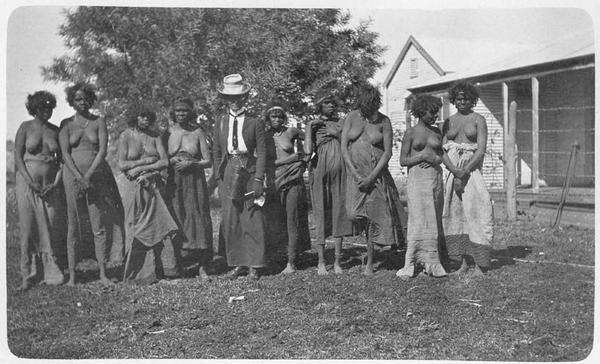



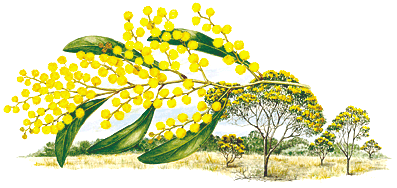


+copy.jpg)










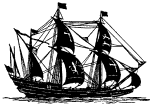





















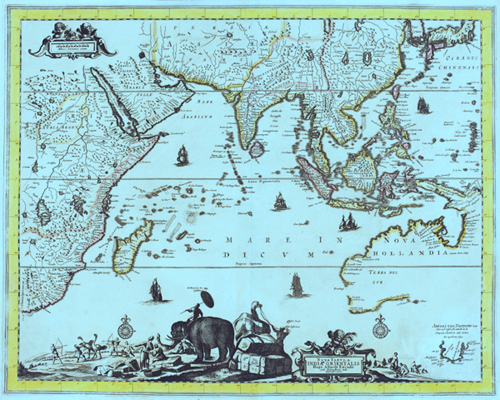

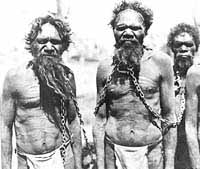
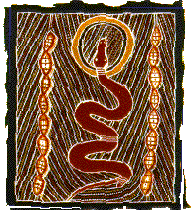


















.jpg)


























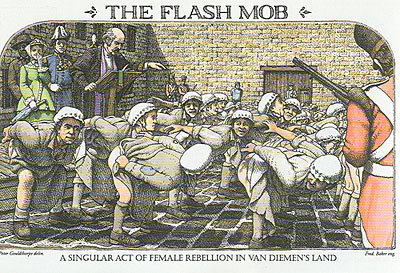
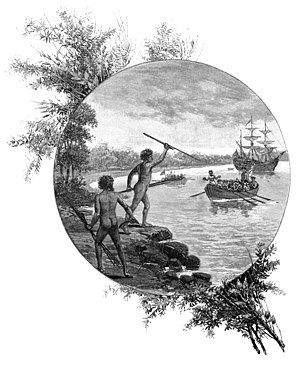 G
G







.jpg)
















4 comments:
William Nash was punished on board the Charlotte for being "unsoldier like behaviour", he was given 150 lashes of 200. This was witnessed by several officers May 3rd 1787. Perhaps he may have met Maria!
Descendant Nash
Thanks for your comment cousin. Yes he may have met her and had the lash for fraternizing with her, but such cavorting was the norm according to other reports. I don't know any more about it, but the important thing was that Maria was a strong woman who brought up children under difficult circumstances and we are the result of her tenacity.
She certainly was law-abiding when she got to Port Jackson and id she had been a bit loose in her morals as a teenager in England she made up for it by being a good mother in the new land.
I think we can be proud of her. (Ric)
I didn't know how useful a tool a blog could be for family history until I saw this. Self publishing on the web is great. I have a small blog about Parramatta's early history at http://davidpovey.blogspot.com that you might be interested in.
Keep up the great work,
David Povey
Hi David Povey. Yes your website is so interesting that i linked it yp with this one. Perhaps you can do the same your end.
You have an interesting layout and background. Thanks for your comment.
Post a Comment